CAPE OF SPICE
Cooking with Faeeza in her Bo-Kaap kitchen
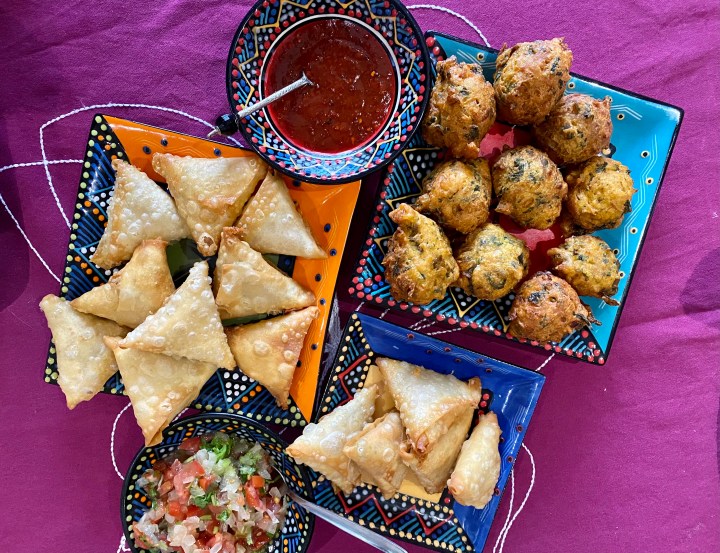
After 30 years of selling rolls to hungry students at UCT, Faeeza Abrahams decided it was time to look after herself. She began cooking for tourists and visitors at her home in Bo-Kaap. Then she featured in an episode of Netflix’s Somebody Feed Phil, which made her famous.
When she was approached to be in a season two episode of the series Somebody Feed Phil, which aired in 2018, Faeeza Abrahams had no idea what Netflix was all about. She had been working since she was 15, with little time for anything else.
For most of that time, she sold rolls to students at UCT, after starting her own business with R50 and help from her mom to make rolls for office workers. “I took them into the city and knocked on all the office doors. They were R2, and on the first day I sold them all; the next day I took a hundred. I eventually covered the whole of the Western Cape – Century City, Montague Gardens, Mowbray, Green Point, everywhere.”
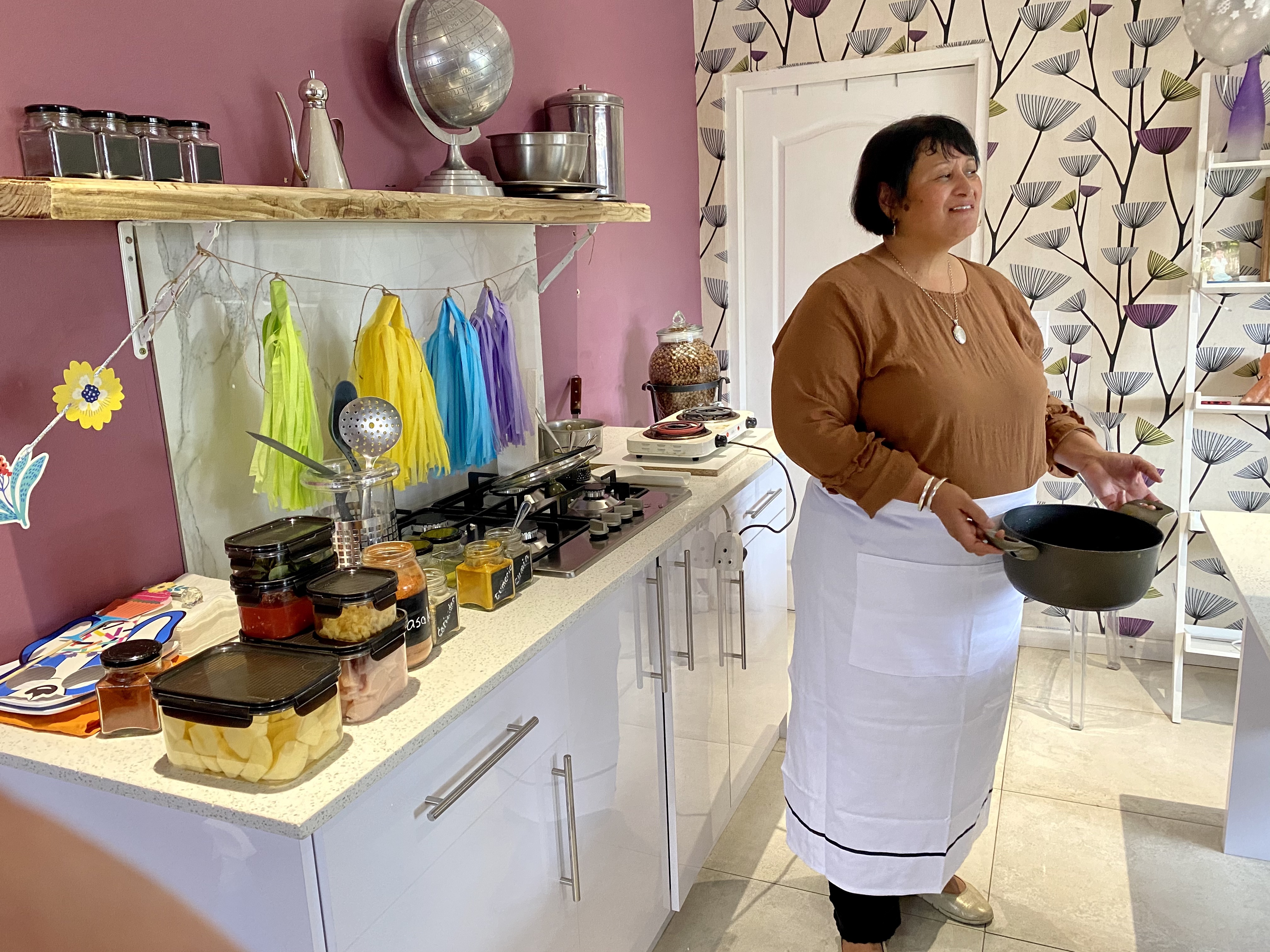
Faeeza Abrahams shows and tells how to prepare traditional Cape Malay dishes. (Photo: Bianca Coleman)
On her first day at UCT, Abrahams sold a thousand rolls. She built her home on land given to her by the City of Cape Town, ignoring the original plans provided and using every available centimetre. So, yes, too busy for Netflix.
“When I turned 55, I walked out. I said now it’s my time, I’ve worked for 40 years, that is enough,” she said. “I take about two hours to see to me in the morning. I take my time. I am really super, super grateful. We pray five times a day and I can only thank God because the universe is on my side. I feel very blessed.
“Harry and Meghan passed by in 2019. Roger Federer and his dad and his brother were here in 2020. I’m supposed to be semi-retired but I must be honest with you, the work I do is nothing compared to UCT, 7am to 6pm every day. This is a breeze. I have two very good helpers, they make me feel like a queen every day. I watched my mom, my step mom, my mother-in-law… in their old age they still had to work in the kitchen whether they were sick or not. In our culture our men are spoiled rotten to the bone, and I’m not that woman. I want to be spoiled and I treat myself every day.”
Abrahams has been married for 43 years, has four children (three daughters married to Indian men) and eight grandchildren she refers to as “Mindians” – half Indian, half Malay. Her son, currently unmarried, is a chef in Hong Kong.
This is all part of Abrahams’s introduction to herself and to the next two and a half hours we will spend with her in her home. At this house in Chiappini Lane, visitors can stop by from 9am to 5pm for a meal, or something sweet with tea or coffee. If they want to learn how to make these traditional foods, there are various options, from the full deal – samoosas, chillibites, curry and rotis, and koesisters for dessert – to parts thereof. The main package takes about two and a half hours, lunch or dinner, and includes the sit-down meal at the end.
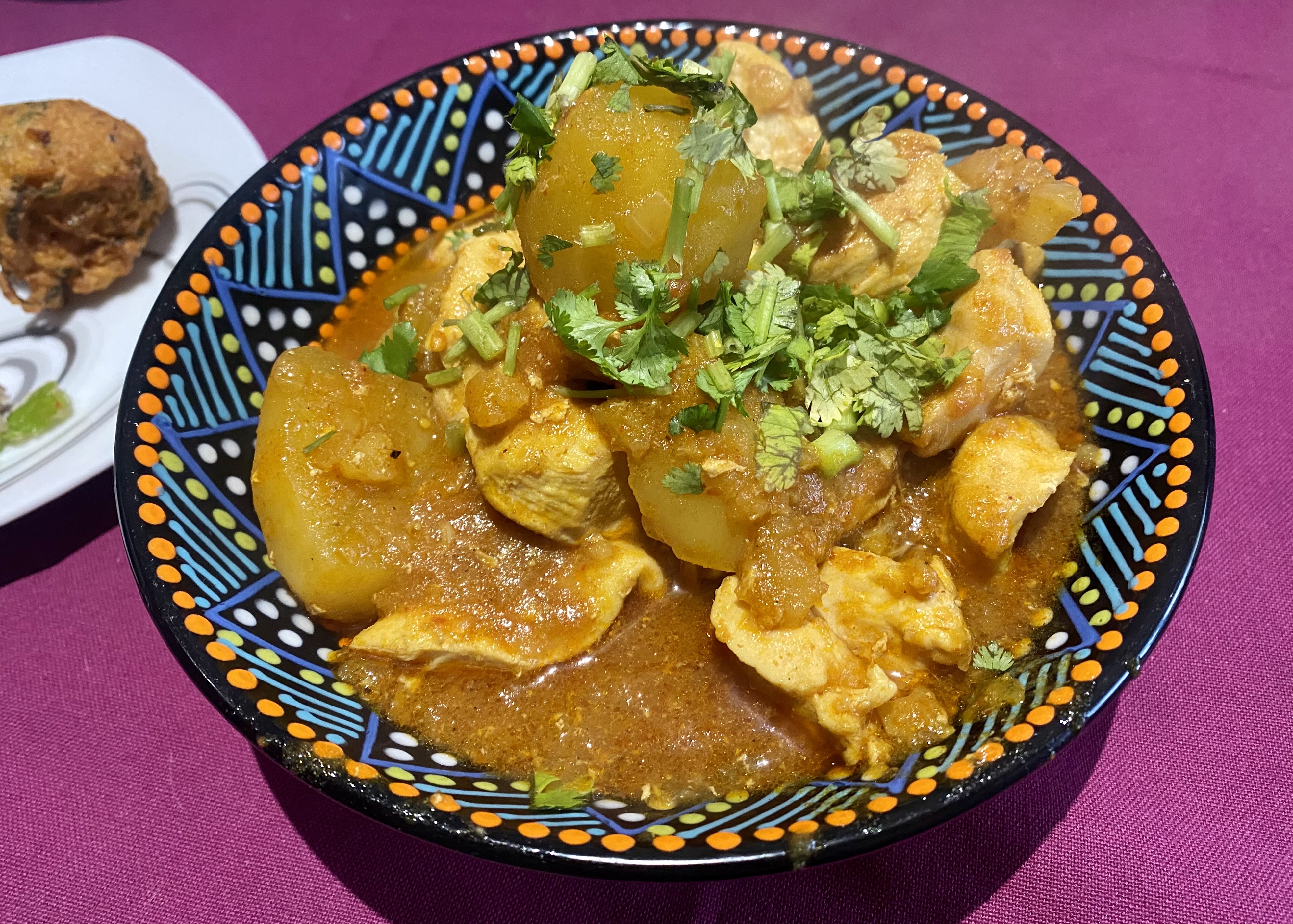
Fragrant flavourful chicken curry is much easier to make than you’d think. It was served with rotis made by the group. (Photo: Bianca Coleman)
“I was the only child who ate all her food, I was the fattest of the five,” said Abrahams. “I’m still like that. I love all the food. There are only two dishes I didn’t make for my family and that was lentil curry because I had eaten it all my life and it was enough. The other one my mother made was trotters. And that was super nice; there wasn’t anything I didn’t like. My taste buds developed so well I can taste a dish and know what’s in it.
“I actually wanted to be a hairdresser by the way,” she added as an aside, “that was my passion. My dad’s side of the family were all barbers. My mother was the cook. Her mother was spoiled and sickly so as the eldest girl, from the age of 10, she cooked for her nine siblings.
“I got that from her. She’s like a magician. She was my influence. You’d never see her busy, but the food was always there.”
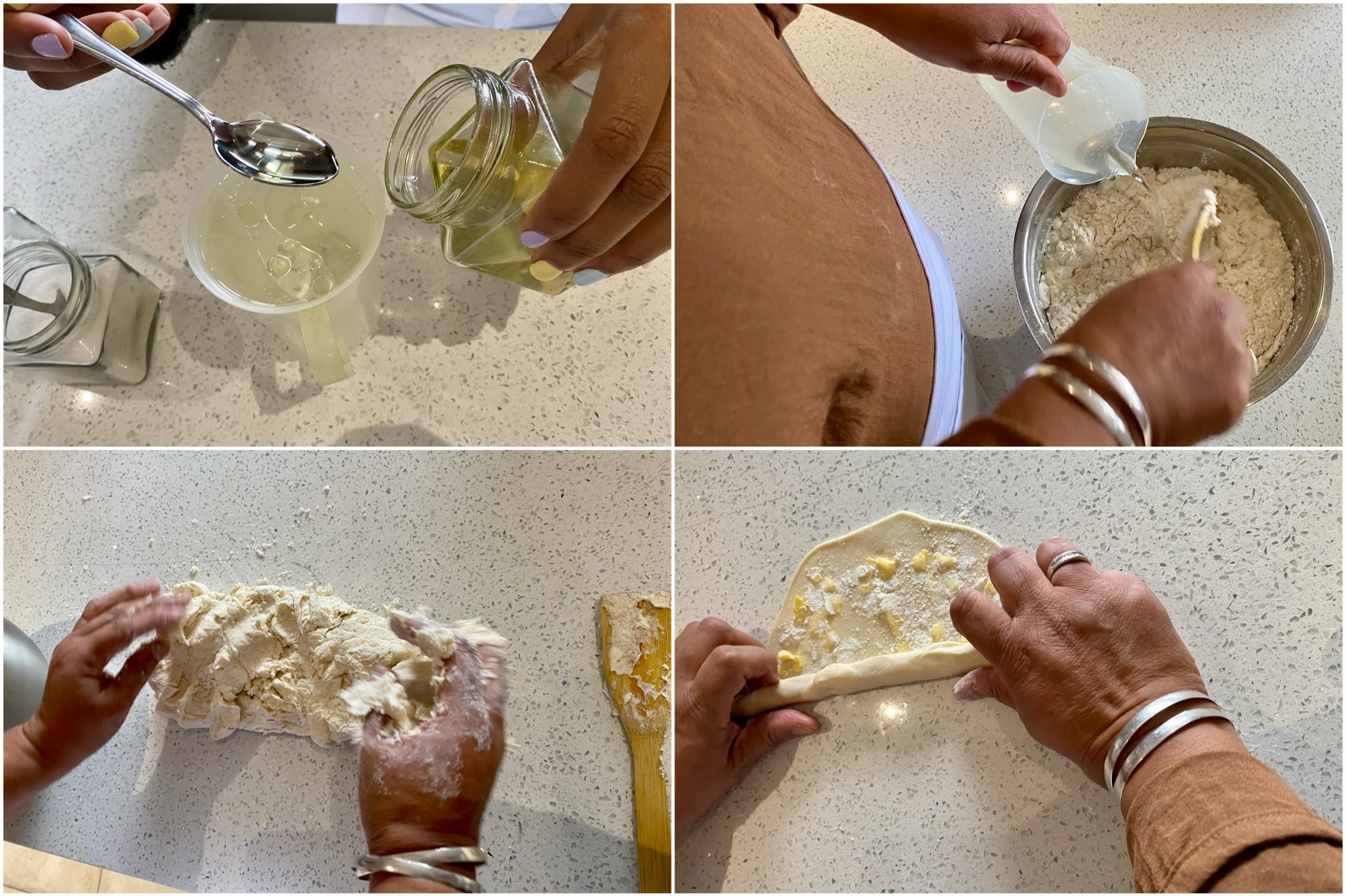
Making rotis is not difficult but it is labour intensive. (Photo: Bianca Coleman)
Abrahams begins the demonstration of the curry. The onions are doing their thing over a medium heat. Do not let them brown, says Abrahams, that will make your curry too dark. Next, the most important part: the spices. By all means use a basic or ready made masala – the word for a mixture of ground spice. But. Making your own will ensure a unique curry. You like it hotter? Add more chilli. Tweak the coriander, and the turmeric. Use fenugreek, mustard, pepper, cinnamon, cloves, cardamom and nutmeg. Or don’t. Playing about with the spices will mean you’ll find your perfect flavour and it will be your secret weapon. Don’t tell anyone.
In go tomatoes, potatoes and chicken. Salt of course. And the pot is settled for simmering while we get onto the rotis. The recipe is simple but I have to say, they’re a lot of hard work – kneading, rolling, twisting, working in the butter, rolling some more (with hands and pins). It doesn’t seem too bad when there’s a group of you around the table but it’s not something I can envisage myself doing at home. You can make extra and freeze them to save you future work, or, and this is the option that appeals to me, you can find a nice Muslim auntie who makes and sells roti balls (the point at which they are frozen, simply thaw, roll flat and fry).
Samoosas on the other hand – those I’m keen for. They use almost the same dough as roti, but rolled paper thin, and I feel this could lead to tears, and tears. Or you can buy the wrappers. Again, better option for the lazy cook. You can fill them with all sorts of things; here, we use cheese and corn (with some spices and so on – I’m not giving away Abrahams’s secrets but she will share the recipes after your class). The folding is fairly simple if you already know how to turn a plastic shopping bag into a triangle to store inside another plastic shopping bag.
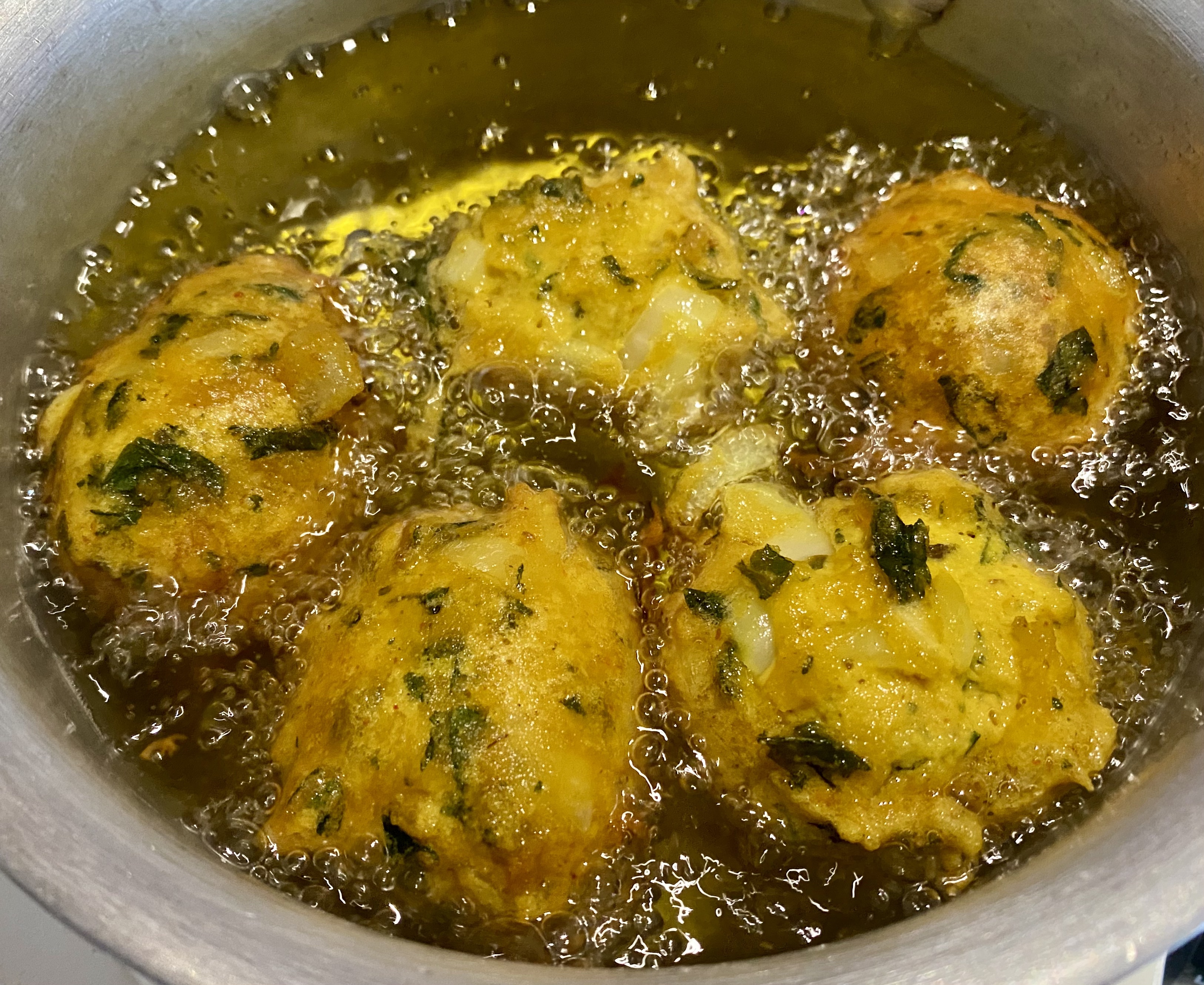
Chillibites sizzling. (Photo: Bianca Coleman)
The main reason for making your own samoosas is that there is nothing more flipping delicious than a samoosa fresh out of the oil. Unless it’s a still-warm chillibite that is golden and lightly crispy on the outside, fluffy on the inside. Made with pea flour or chickpea flour, onions, spinach, and a few assorted spices, the trick is to let them cook slowly. By this time, everyone is hanging over the pot of bubbling oil in anticipation of that chillibite.
Suddenly, the work surface on which we’d been making our rotis and samoosas is wiped down and set with a brightly coloured tablecloth. Plates, glasses, and jugs of juice materialise along with plates of our samoosas and chillibites. Nobody wastes any time getting stuck in.
Bowls of steaming fragrant curry follow, with a platter of rotis. Abrahams shows everyone how to fill and roll them properly so as not to have the entire lot fall down the front of your shirt.
Last but not least is dessert. “Koesister is my culture. I grew up in the ’60s and we had them every Sunday for breakfast,” said Abrahams.
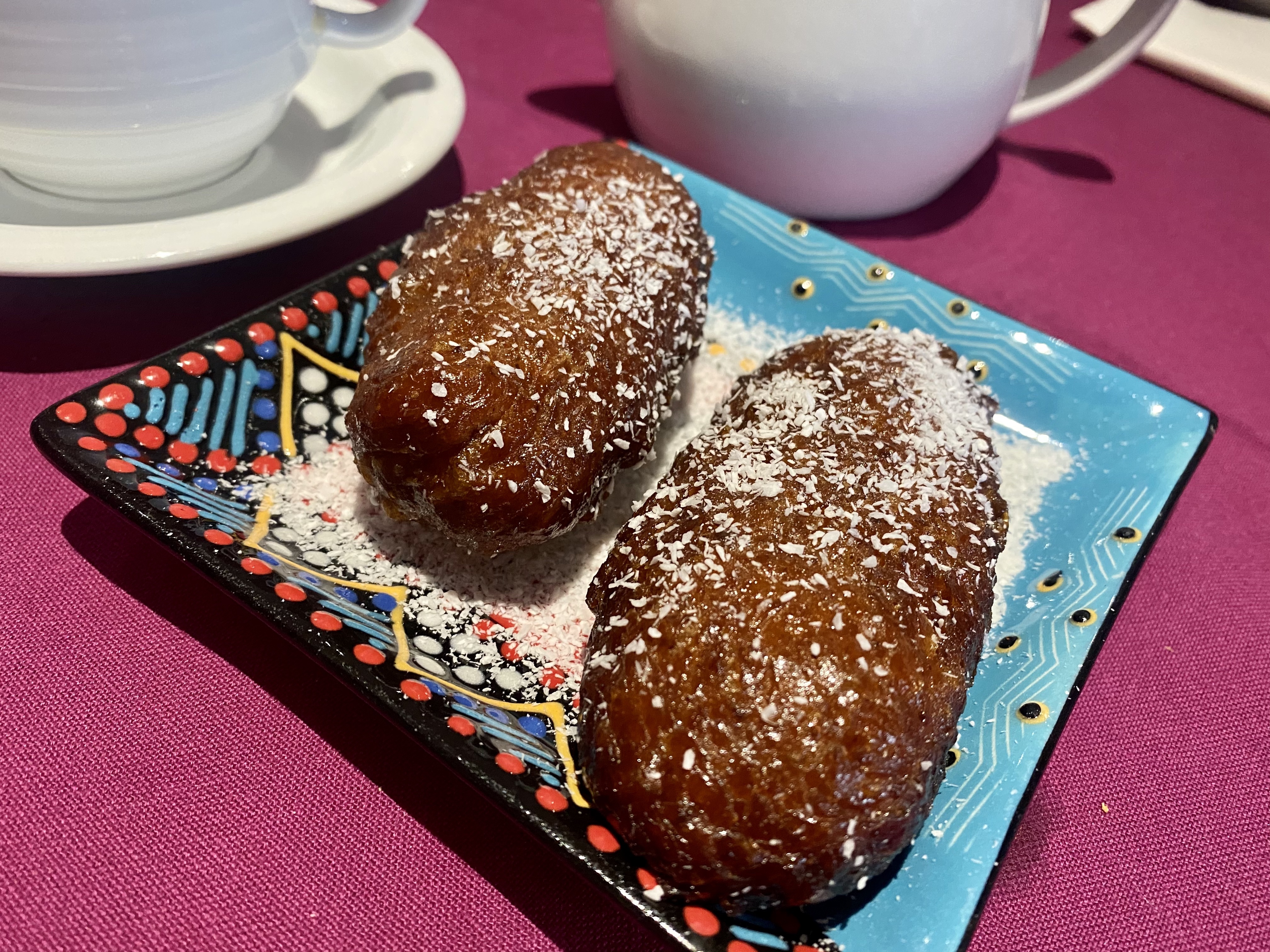
Warm koesisters and rooibos tea complete the meal, even if it wasn’t Sunday. (Photo: Bianca Coleman)
Logistically and practically there is no time to make these at the class, which would take at least another hour and a half. So the koesisters are served, soft, warm, sweet, spicy, sticky and dusted with coconut – for some reason the only way I can tolerate desiccated coconut. I remembered this week that my granny’s beef mince curry was presented with sliced bananas and a liberal sprinkling of the ghastly white flakes. Grandad would have no truck with any of it. He was a meat and boiled potatoes man with no desire to take his palate on adventures. The curry recipe wasn’t actually that different to Abrahams’s but, please, lose the coconut. DM/TGIFood
For more information, click here.
Follow Bianca Coleman on Instagram @biancaleecoelman
The writer supports The Gift of the Givers Foundation, the largest disaster response, non-governmental organisation of African origin on the African continent.





Comments - Please login in order to comment.